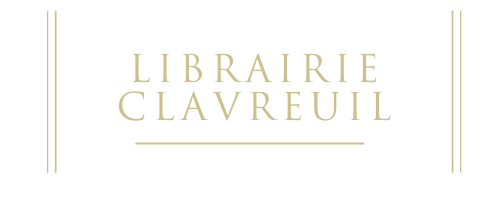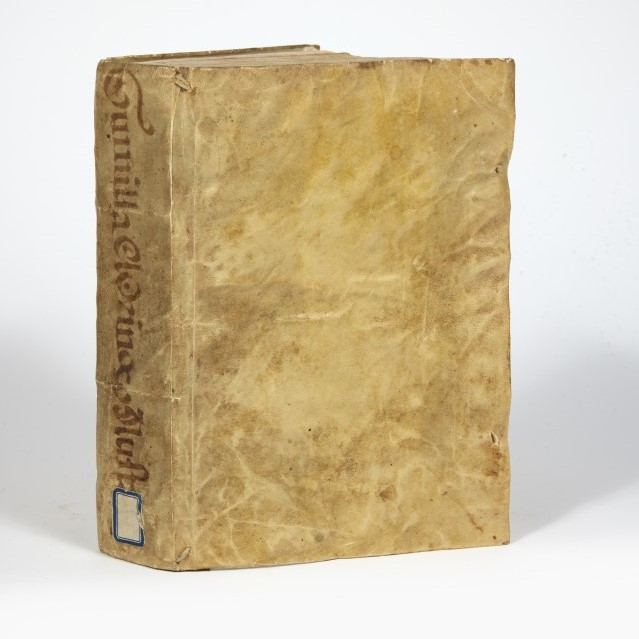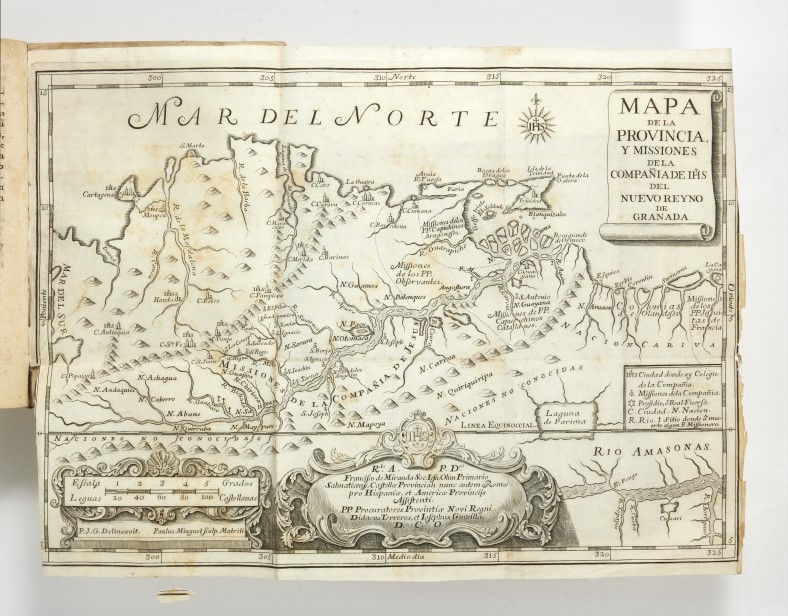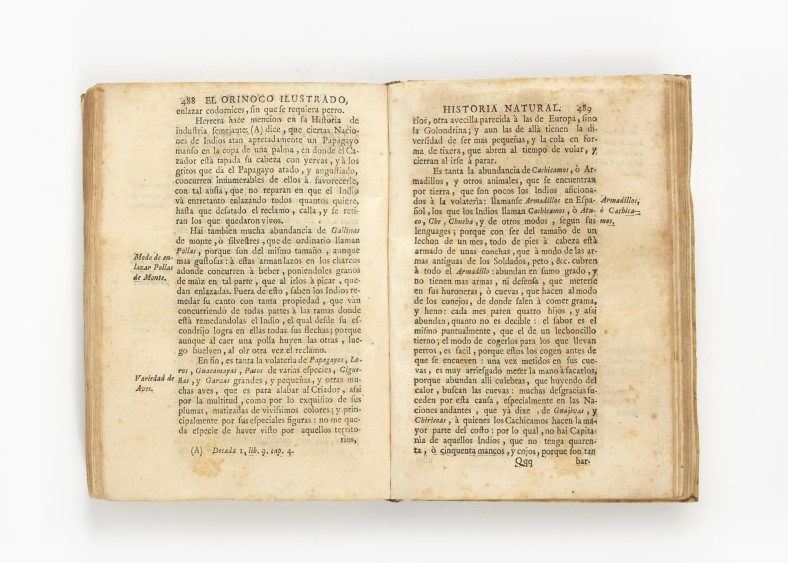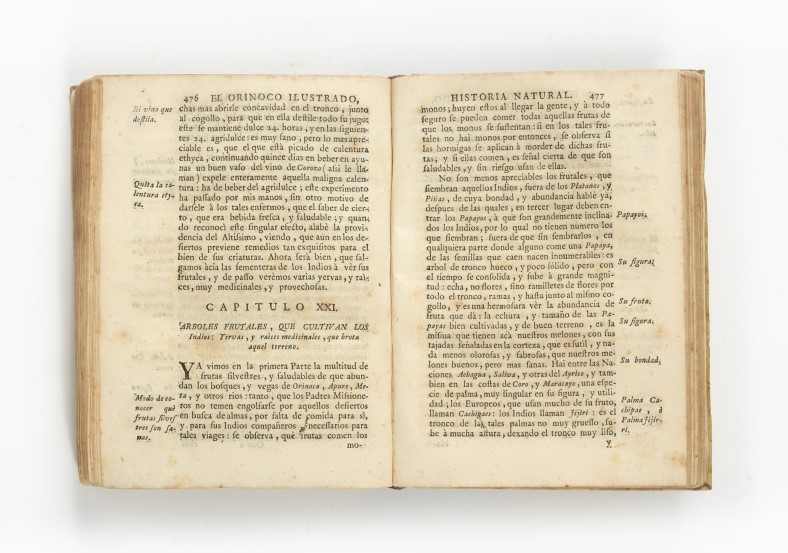In stock
First edition of this important account by the Missionary Joseph Gumilla who spent 30 in South America. A learned man he became fluent in many different dialects of the local tribes.
“Gumilla departed in 1705 for South America, arriving at Santa Fe de Bogota in the following year… He travelled widely on the Middle Orinoco and had ascended the Apure, Arauca and Meta rivers. Gumilla returned to Spain in 1739 and in 1741 published what was the first descriptive account of the Orinoco and its tributaries, from its delta (which he attempted to chart) as far as the confluence with the Meta… In this book Gumilla spoke bitterly of the slave traders who invaded his territory” (Howgego).
Local fruit and drink
Gumilla has devoted an important portion of his book on local food and drink. Chapters 18 to 22 (pp. 449-498) contain a large variety of details on exotic and hitherto little known produce consumed by the indigenous people.
Chapter 18 contains a long article on caymans and crocodiles, the virtues attributed to their fangs, and how to hunt. Details are given on how to find the nests, and about the delicacy of their eggs (eaten raw or cooked).
Chapter 19 enumerates the ways on how the locals prepare the fields and what sort of fruits is found in their area (Modo de cultivar sus tierras los Indios, y los frutos princpilaes que cogen). He explains the people living in the forest would first clear a small field by hand (men would cut the bushes, and women would carry the timber and debris away) just enough to nourish the tribe. The remainder of the field would then be burned down to plant corn, yuca and pepper. The corn used could be harvested already after a maturation of only 2 months (maiz de dos meses). Uncultivated produce includes wild rice (abunda el arroz silvestre), and watermelon. Details are given on monkeys ravaging the harvested corn. Hunted and trapped by the natives their cooked meat is considered a delicacy (los monos son para ellos gran regalo).
Chapter 20 gives information on other fruit mixed into the corn flour including yuca and patalcas (yuca & chaco), potatoes (batatas). The plantin plant is also mentioned as well as a varity of uses (Platanos, Figura del arbol platano ; Su racimo y flor ; De vianda, y conserva, Sirven de Bebida) ; fermented corn beer and how to produce it (Cerbeza de Maiz ; Modo de cocerlo), followed by the description of the pineapple (De Pinas ; Figura des estas), the spiky palm tree and the drink made of (Palma Corozo ; El vino destila)).
Chapter 21 contains information on cultivated fruit trees by the natives (Arboles frutales,, que cultivan los Indios) including Papaya, varieties of palm trees (Palma Cachipae, é Palma Jijirri ; Palma Camuirre), specially mentioned are the medicinal virtues of the tutuma fruit (Tutumo, su figuira, y utilidad ; Su carne es remedio muy experimentado), of Verbena (Bervena, yerva admirable).
Chapter 22 contains information on animal proteins as consumed by the locals including poultry armadillo, and ants (Pollo desl Monte ; Aramdillo o Cachicamos ; Fritadas de Hormigas).
The fine large folding map (303 x 407 mm) depicts the provinces of the missions of the Society of Jesus (“Mapa de la provincia, y Missiones de la Compania des IHS del nuevo Reyno de Granada”), with the lower part showing a detail of the Amazonas river; the two plates show muscial instruments including a war drum.
Provenance: Pedro Cladera (old inscription on the title page) – Modern stamp of a Spanish library on the fly leaf.
Good copy, some quires toned.
Vous pourriez également être intéressés par ...
Related products
-
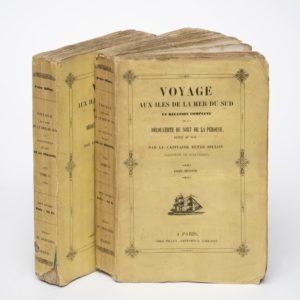
DILLON, Peter
2 800 € Add to basket
Voyage aux îles de la Mer du Sud
1830 -
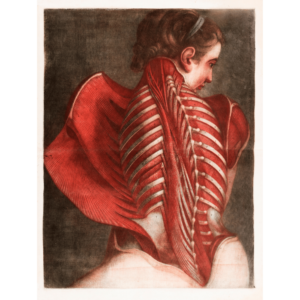
GAUTIER D’AGOTY Jacques Fabien
100 000 € Add to basket
La Myologie complète
1711-1786 -

BURNES Alexandre
2 800 € Add to basket
Voyages de l’embouchure de l’Indus à Lahore …
1835 -
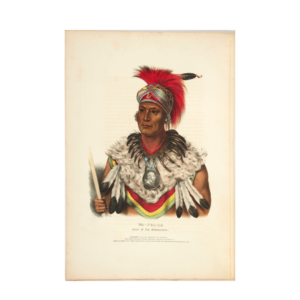
MCKENNEY Thomas L
150 000 € Add to basket
History of the Indian Tribes of North America
1836
